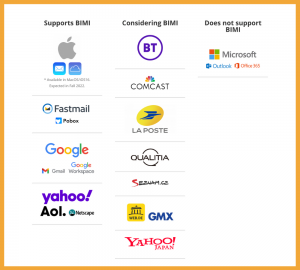In the third installment of his series on cross-channel digital marketing, columnist Josh Dreller explains how search and display can work together to inform one another and drive results.

In the first part of this series on cross-channel paid search, I posited that cross-channel marketing will one day be the standard for most marketing organizations.
I also presented some ideas on how paid search and social advertising could better work together, as they are natural cousins — they share the biddable, auction-based format.
In the second part, Search and TV, I made the case that even small gains and lifts in marketing performance from cross-channel coordination are a valid enough reason to push past today’s single-channel norm. TV’s mass reach and influence means that search marketers should make it a focal point for this evolution.
Ultimately, the point I’m trying to make with this series is that search marketers should be the ones to reach across the aisle and be the agents of change to help push cross-channel marketing forward. This is because of search’s unique place in the funnel as a “catch-all” net for all other channels to drive consumers towards.
In essence, search already is a cross-channel medium. If you’re going to build a cross-channel foundation, search has to be where you start, and it’s the responsibility of search marketers to lead this evolution.
Cross-channel operationalization is a dance
Take it from me — moving from a siloed, single-channel approach to a cross-channel one is not easy. Even though most marketers know that coordinated marketing across channels has the potential to yield higher returns than working via single channels, to put it into practice can sometimes simply be too big for their organizations to handle.
A few years ago, I worked for a cross-channel attribution company. This was when holistic measurement was really gaining legs and interest in the industry, and a lot of marketers were looking to go beyond the “last click” measurement standard.
However, as companies began investigating what it takes to bring all channels together, they quickly learned that it’s the operationalization — getting people on board to change to a new way of thinking — that is the biggest barrier to a cross-channel approach.
Most organizations seemed to have tried to approach cross-channel operationalization as a military exercise. You lay out the plan, you hold teams accountable, and then you hit the Go button. However, this didn’t work that well. Channel teams, already extremely busy and with a lot of pressure to continue delivering strong results, failed to prioritize accordingly — and thus, the new system would fail.
The right approach seems to be more like a group dance than a military mission. One team (dancer) must begin and leave room for the others (dancers) to follow. You have to take small steps at first, until the entire group feels comfortable to move on to more advanced moves. Slowly, the ones moving faster gear down to let the slower ones catch up.
Eventually, you have something that looks coordinated simply because everyone is extremely aware and cautious about how the entire dance looks, not just their part.
In a way, a successful cross-channel operationalization rollout looks less like a marketing operation and more like the electric slide.
Search and display grew up together
In this series, I’ve written about search with social and with TV, but online display is really the channel that has already been pioneered the furthest to work closely with search.
When digital marketing first started in the early 2000s, all of the sub-disciplines were simply labeled as “interactive” and put into a small bucket that hovered at three to five percent of total marketing spend.
Eventually, search really took off, and it’s no secret that its meteoric success was a big driver for all of digital marketing to earn a rightful place at the table. To this day, it still provides some of the most valuable ROI in the entire marketing plan. Even during the recent recession in the late 2000s, when marketer budgets were being cut left and right, brands were spending — and increasing spend — on paid search.
However, display (which includes banners, online video and rich media) needed to adapt or die at that time. Dominated by ad networks that bought impressions from publishers at an extremely low price and sold them for many times their cost to advertisers, display’s value was shrinking.
But then some folks (early on, Right Media, and then Invite Media) began pioneering what was then called “performance display,” which then became “programmatic display” — and biddable, real-time auction display began a renaissance.
A lot of search marketers were either recruited over or found their way to programmatic display because of its obvious parallels to biddable paid search. And now, programmatic display is the dominant method in which display ads are purchased and is set to eclipse paid search in 2016 and become the biggest digital marketing channel in terms of advertiser spend.
Today, paid search and programmatic display are the foundation of digital marketing.
Search retargeting to display
Today, there are already multiple cross-channel opportunities for marketers looking to connect search and display.
The search term that a consumer uses to research online is probably the strongest intent signal a brand can have for that person. Regardless of which pages or apps a consumer clicks to, nothing tells more about a consumer than their keyword history.
For display marketers, leveraging the keyword for their channel in the form of search retargeting is a practice that has been around almost a decade. Marketers simply bucket website visitors based on the keywords that drove them to the site, and then retarget those cookies with relevant ads — sometimes with the search term embedded into the ad as a strong flag to attract these consumers.
This practice was a lot easier before Google began obfuscating the organic keywords of website visitors, but it can still be accomplished with paid search traffic, as the originating keyword is still provided.
Search retargeting has advanced over the years. Some technology vendors have been able to cut deals with online publishers and aggregate giant proprietary lists of cookied users and their search terms. Display marketers can then purchase the right to target (anonymously via cookies) these users based on keywords relevant to these cookied users.
This is useful because most brands don’t have enough volume with their own website visitors to make search retargeting a scalable program.
Where we could go with this: Search signals drive display
Even though search retargeting has proven itself to be a viable marketing tactic, I see an opportunity for display marketers to take this concept even further.
What if programmatic display platforms (DSPs — demand side platforms) were able to truly ingest an entire paid search account and utilize all of the signals as part of the bidding algorithm?
The average paid search account contains numerous valuable signals, including what ads are working, how valuable certain types of traffic are, trends of interest (searches) for certain product lines (campaigns) and so on.
For example, if the search campaign for skateboards begins to shrink in volume while the campaign for hoverboards suddenly spikes, that could be a strong indicator for the same programmatic display campaigns to change the way they are being bid.
The paid search data stream at worst is a daily data feed, but it could potentially be in line with how often the engines update their numbers. So, in virtually real time, display campaigns could be reacting with real market feedback in the form of paid search performance.
I’m actually not sure if any programmatic display technologies are doing this right now, but if they’re not, they’re missing out on what might be the strongest data feed to help guide their campaigns.
Moving forward
Search and display have had a strong connection in this nascent digital marketing industry. Unlike TV, which is offline, and social behind walled gardens, search and display are digital media that can freely use anonymous cookies as the point of connection for cross-channel coordination.
With display now primarily a biddable channel, the connection to search is even closer. As we progress further, there will be more opportunities to find ways to strengthen the connection between these two channels.
As a search marketer, if you haven’t already begun working closely with your online display teams, then it’s time to start. No other channel offers more readily available cross-channel options.
Even if it’s not clear how this will directly help your search accounts immediately, you could provide valuable insights and data to the display folks that will end up driving more interest — and searches — that will drive better search performance downstream.
[Article on Search Engine Land.]
Some opinions expressed in this article may be those of a guest author and not necessarily Marketing Land. Staff authors are listed here.
(Some images used under license from Shutterstock.com.)
Marketing Land – Internet Marketing News, Strategies & Tips
(51)







